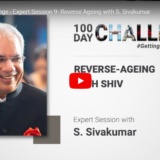The Little Blue Reasoning Book

‘The Little Blue Reasoning Book: 50 Powerful Principles for Clear and Effective Thinking’ is written by Brandon Royal
Some 2,500 years ago, Socrates gave birth to the art and science of what we now call critical reasoning; also referred to as critical thinking, it may be defined broadly as “the process by which we evaluate information.” Notwithstanding our ability to read, no other single skill is more important than our ability to reason.
This book provides a distillation of the most useful reasoning concepts, presented as fifty tips interspersed through five chapters.
Chapter 1 on ‘Perception & Mindset’ provides an initial framework for reasoning.
Chapter 2 on ‘Creative Thinking’ introduces non-traditional thinking methods.
Chapter 3 on ‘Decision Making’ focuses on applied reasoning and introduces various tools, the major benefit of which is to structure or quantify the decision-making process.
Chapter 4 on ‘Analyzing Arguments’ shows us how to break arguments down according to classic argument structure: conclusion, evidence, and assumption.
Chapter 5 on ‘Mastering Logic’ provides the foundation for understanding some of the most relevant examples of reasoning flaws found in everyday conversation and speech.
Here is a glimpse of some of those Tips:
Tip #2: Think of mindsets as divided into four basic types: Analysts, Idealists, Realists, and Synthesists.
Tip #4: Convergent thinking focuses the mind; divergent thinking opens the mind.
Tip #6: Not challenging the obvious, evaluating ideas too quickly, and fear of looking the fool — these are the three greatest creativity inhibitors.
Tip #8: Brainstorming has rules: quantity of ideas is preferred, wacky ideas are welcome, delayed evaluation is mandatory, and “hitchhiking” is encouraged.
Tip #11: In selling creative ideas, most people are moved more by the depth of a person’s conviction and commitment than they are by the details of a logical presentation.
Tip #19: Evidence + Assumption = Conclusion. The assumption is the glue that holds the evidence to the conclusion.
Tip #21: The five most common critical reasoning errors people make include: comparing “apples with oranges,” over-generalizing on the basis of small samples, ignoring relevant evidence, confusing cause and effect, and failing to anticipate bottlenecks when plans are put into action.
Tip #34: Test the opposite scenario — if you hear that a full moon causes the crime rate to rise, always ask what the crime rate is like when the moon is not full.
Tip #40: Always look for potentially vague terms in an argument and ask for or seek clarification.
Tip #45: Necessary conditions are not the same as sufficient conditions. The statement “A person needs water to remain healthy” does not mean that water alone is enough to keep a person healthy. Water is a necessary but not sufficient condition for someone to remain healthy.
The book also presents 10 classic trade-offs:
- Breadth vs. Depth
- Control vs. Chance
- Individual vs. Collective
- Means vs. Ends
- Quantity vs. Quality
- Short-term vs. Long-term
- Specific vs. General
- Subjective vs. Objective
- Theory vs. Practice
- Tradition vs. Change










